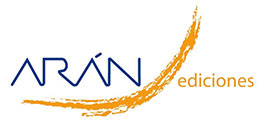Artículo Especial
Fifty years of beverages consumption trends in spanish households
Paula Rodríguez Alonso, Susana Del Pozo De La Calle, Teresa Valero Gaspar, Emma Ruiz Moreno, José Manuel Ávila Torres, Gregorio Varela-Moreiras
 Número de descargas:
58247
Número de descargas:
58247
 Número de visitas:
10071
Número de visitas:
10071
 Citas:
3
Citas:
3
Compártelo:
Objectives: To describe the evolution of non-alcoholic and alcoholic beverages consumption in the Spanish households from the 60’s to nowadays. Methods: This study is based on beverages and food consumption in Spanish households; the data sample consisted of consumption and distribution data, obtained from the Household Budget Survey (HBS) since 1964 to 1991 and from the Food Consumption Survey (FCS) since 2000 to 2014, in collaboration with the Spanish Nutrition Foundation (FEN).Results: In 2014 the average consumption of non-alcoholic beverages was 332 g/person/day, whereas alcoholic beverages consumption represented 72.6 g/person/day. Consumption of non-alcoholic beverages has increased 721% (1964: 46 g/person/day; 1991: 96 g/person/day; 2000: 240 g/person/day and 2014: 332 g/person/day), whereas alcoholic beverages consumption has decreased roughly a 50% (1964: 145 g/person/day; 1991: 113 g/person/day; 2000: 78.4 g/person/day and 2014: 72.6 g/person/day). The most consumed alcoholic beverage in 2014 was beer (41.3 g/day), followed by wine (23.0 g/day). Regarding non-alcoholic beverages, the most consumed was water (144 g/day), followed by cola (ordinary: 30.7 g/day and diet: 20.5 g/day).According to Spanish regions, in 2014 non-alcoholic beverages were the most consumed in the islands (Balearic Islands 521 grams/person/day; Canary Islands 515 grams/person/day), as it was in the nineties (Balearic Islands 148 grams/person/day and Canary Islands 281 grams/person/day). However in 1980-81 the largest consumption of alcoholic beverages was that of Galicia, 408 g/person per day, and the lower in the Canary Islands, 63 g/person per day. In 2014, Murcia and Andalucía represented the regions with the highest consumption of alcoholic beverages. In 2014, alcoholic beverages provided roughly 1.89% of the total energy and 1.47% of sugars, whereas non-alcoholic beverages provided 3.28% of energy and 15.72% of sugars and, in 2000, alcoholic beverages contributed 2.29% of the energy and 1.47% of sugars and non-alcoholic drinks provided 3.76% of the energy and 22.7% of sugars.Conclusion: There have been signifi cant changes in the eating patterns at the Spanish homes, especially regarding beverages consumption, over the last five decades. In general, a higher consumption and variety for non-alcoholic drinks has occurred, especially in the islands. In parallel, a decline in alcoholic beverages consumption has been clearly observed.
Palabras Clave: Non-alcoholic beverages. Alcoholic beverages. Nutrition survey. Dietary habits.
Artículos Relacionados:
Trabajo Original: Diseño de un programa de educación nutricional destinado a mujeres saharauis residentes en los campamentos de tinduf (argelia)
Marta Arroyo-izaga , Virginia Andía Muñoz , Geert Demon
Trabajo Original: Consumo de alcohol y perfil lipídico en participantes del Estudio Longitudinal de Salud del Adulto (ELSA-Brasil)
Oscar Geovanny Enríquez Martínez , Vivian Cristine Luft , Carolina Perim de Faria , Maria del Carmen Bisi Molina
Trabajo Original: Evolución en la oferta de bebidas no alcohólicas en los últimos 25 años: reducción de azúcar como nutriente crítico y uso de edulcorantes
Rafael Urrialde , Andrea Cano , Isabel Estévez-martínez , Aránzazu Perales-garcía
Trabajo Original: Prevención de la enfermedad cardiovascular y bebidas alcohólicas fermentadas. ¿Realidad o ficción?
Ignasi Sacanella Anglés , Rosa Casas Rodríguez , Esther Viñas Esmel , Sara Castro Barquero , Emilio Sacanella Meseguer
Revisión: La educación ante el consumo de riesgo de bebidas alcohólicas: propuesta de actuación multidisciplinar desde el profesional de la salud
Manuel Amezcua , Eduard García Pedregal , Jorge Jordana , José Luis Llisterri , Ana Rodríguez Sampedro , Antonio Villarino Marín
Trabajo Original: Estudio Nutricional en Población Infantil de España (EsNuPI)
Rosaura Leis Trabazo , José Manuel Moreno Villares , Gregorio Varela-Moreiras , Ángel Gil
Trabajo Original: Prácticas y creencias habituales en la preparación de la alimentación complementaria infantil en una muestra española: estudio transversal
Rocío Zamanillo Campos , Laia Rovira Boixadera , Tara Rendo Urteaga
Trabajo Original: Modificación de los hábitos alimentarios del almuerzo en una población escolar
Trabajo Original: Adherencia a la dieta mediterránea en la población universitaria
Trabajo Original: Cumplimiento de las recomendaciones dietéticas vigentes y variabilidad geográfica de la dieta en mujeres participantes en 7 programas de cribado de cáncer de mama en España
Trabajo Original: Influence of physical activity and dietary habits on lipid profile, blood pressure and BMI in subjects with metabolic syndrome
Trabajo Original: Design of a self-administered online food frequency questionnaire (FFQ) to assess dietary intake among university population
Revisión: Obesidad en la población infantil en España y factores asociados
Ana M. López-Sobaler , Aránzazu Aparicio , María Dolores Salas-González , Viviana Loria-Kohen , Laura M. Bermejo
Trabajo Original: Students of dietetics & nutrition; a high risk group for eating disorders?
Trabajo Original: Hábitos alimentarios y psicológicos en personas que realizan ejercicio físico
Trabajo Original: Consumo de bebidas energéticas, alcohólicas y azucaradas en jóvenes universitarios de la frontera México-USA
Trabajo Original: Calidad de vida y sus factores determinantes en universitarios españoles de Ciencias de la Salud
Trabajo Original: Association between dietary habits and the presence of overweight/obesity in a sample of 21,385 Chilean adolescents
Trabajo Original: A strategy for weight loss based on healthy dietary habits and control of emotional response to food
Trabajo Original: School dietary habits and incidence of dental caries
Trabajo Original: Hábitos dietéticos y creencias sobre la alimentación de las personas con enfermedad de Crohn
Revisión: ¿Sabemos lo que es un consumo moderado de alcohol? El caso particular de la cerveza
Ligia Esperanza Díaz Prieto , Sonia Gómez-Martínez , Esther Nova Revato , Ascensión Marcos
Revisión: Problemática nutricional de mujeres cis y trans
Isabel Castellanos-López , Liliana Guadalupe González-Rodríguez , Laura M. Bermejo , Esther Cuadrado-Soto , Ana M. López-Sobaler
Artículos más populares
Revisión: Inteligencia artificial generativa ChatGPT en nutrición clínica: avances y desafíos
ChatGPT y otras herramientas de inteligencia artif...
Revisión: Suplementación con micronutrientes y sus beneficios: ¿por qué y cuándo?
Introducción: los micronutrientes participan en la...
-
Licencia creative commons: Open Access bajo la licencia Creative Commons 4.0 CC BY-NC-SA
https://creativecommons.org/licenses/by-nc-sa/4.0/legalcode




